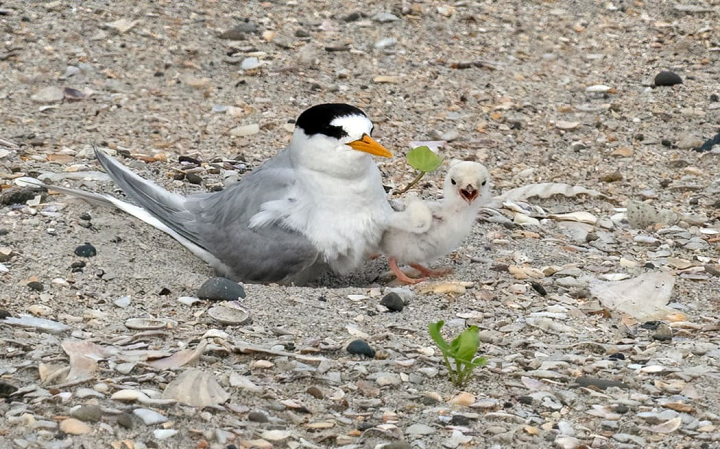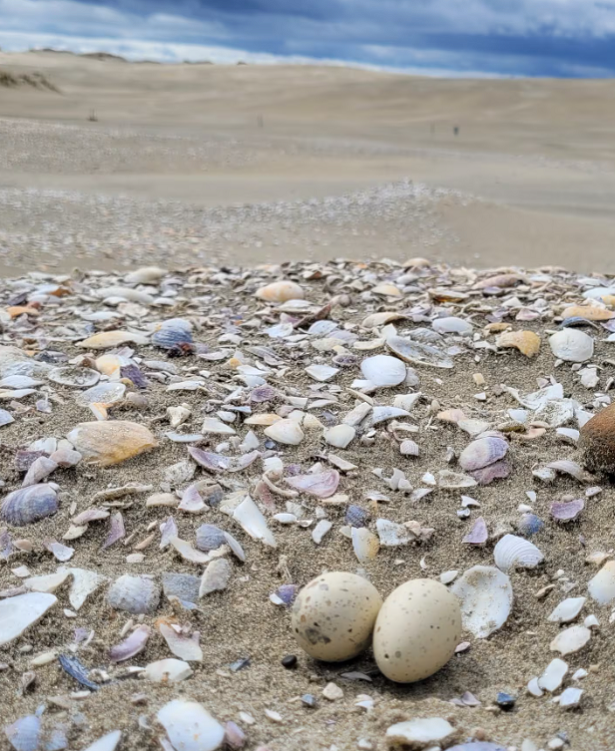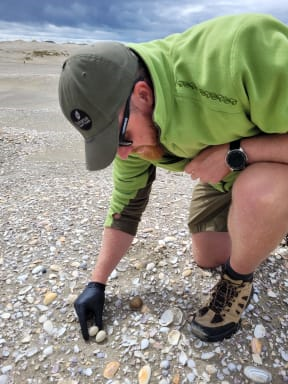Saving the New Zealand Fairy Tern: 3D Printed Eggs on Easter Sunday – 3DPrint.com
In honor of Easter Sunday at present, we’re bringing you a particular story about 3D printed eggs, however this isn’t your typical Easter Egg piece. The Division of Conservation (DOC) in New Zealand is utilizing 3D printing to assist defend the eggs of the extraordinarily endangered fairy tern, or tara iti. In response to the ZSL institute of Zoology, this magical-sounding creature is New Zealand’s rarest indigenous breeding chook, with solely 9 breeding pairs left and just some remaining breeding websites. 3D printing is commonly used as a wildlife conservation device, and the DOC turned to it on this occasion to maintain the eggs secure throughout high-risk durations like storms and excessive tides, thus serving to to make sure the survival of the species.
The once-widespread fairy tern is a small coastal chook, preferring to put its eggs on sandy seashores with little protecting vegetation. There are simply 5 primary breeding websites in Auckland: Papakānui Spit, Pākiri Seashore, Waipū and Mangawhai sandspits, and Te Ārai Stream mouth. As a result of they nest on the bottom, and never excessive up within the timber, these little birds are much more weak to threats. Storms and excessive tides, together with coastal improvement, degrade and shrink its nesting space, and small animals, like cats and hedgehogs, can simply make a meal out of the tara iti. The DOC started conservation administration for the chook a few years in the past, with rangers and volunteers finishing up duties like hanging indicators to guard nests, trapping predators, stopping disturbances close to the nesting websites, and, most not too long ago, managing their eggs.

A tara iti chick steps briefly out of its nest at Waipū to discover. Picture: Provided / Darren Markin
Throughout high-risk durations, DOC employees takes eggs from the fairy tern nests and places them in incubators on the Auckland Zoo. The actual eggs are changed with pretend ones, so the birds nonetheless have one thing to incubate themselves. Hand-painted wood eggs have been used at first, after which actual eggs with wax contained in the hole heart. However final yr, the DOC obtained funding from the Endangered Species Basis (ESF) – Tāngaro Tuia te Ora to enhance their egg reproduction strategies.
“DOC is basically fortunate to have the assist of ESF to supply these 3D eggs that are an important administration device used to avoid wasting tara iti,” stated Ayla Wiles, DOC Biodiversity Ranger, Whangārei. “They permit us to enhance productiveness and save nests with out dropping actual eggs within the course of.”

Two 3D printed reproduction eggs maintain a tara iti/NZ fairy tern nest at Mangawhai – certainly one of simply 5 websites the place the critically endangered shore birds now breed. Picture: DOC
With the improved funding, the DOC commissioned Auckland-based designer, illustrator, and photographer Shaun Lee to create 3D printed reproduction eggs, designed to match the actual ones in measurement, shade, texture, form, weight, and UV resistance; the replicas have been hand-painted by artist and marine biologist Carina Sim-Smith. Lee may be very targeted on restoration, conservation, and air pollution prevention, and again in 2018 made a number of 3D printed tara iti decoys “as a device for conservation, training and advocacy.” He’s additionally 3D printed replicas of those uncommon birds for the Mangawhai Museum.
“As there are solely 40 of those birds left on the earth they have been by no means going to have the ability to get a taxidermy one for an exhibition,” Lee defined on the time.
The DOC reviews that the 3D printed fairy tern eggs are so just like the actual ones that the birds don’t even know that they’ve been swapped. Plus, the replicas are clearly working, because the initiative reported a record-breaking breeding season with 22 eggs laid, and 14 chicks hatched.

Ranger Harry Haywood placing 3D printed reproduction eggs right into a tara iti nest. Picture: DOC / Shannah Courtenay
“It’s been so heartening this yr to see the progress DOC, volunteers, neighborhood teams and Auckland Zoo have made to spice up numbers of the tara iti,” stated Natalie Jessup, Basic Supervisor of ESF. “We have been joyful to see the substitute eggs have been profitable at holding nesting websites throughout dangerous durations when the actual eggs have been safely cared for at Auckland Zoo – they have been so reasonable dad or mum birds had no thought they weren’t sitting on the actual factor.”
Conservation efforts like these are certainly one of my favourite makes use of of 3D printing; I really like seeing how the know-how can be utilized to make the world a greater place by serving to its animals.

Fairy tern / tara iti egg (L) and 3D printed dummy egg (R) used within the nest safety program. Picture: Provided / DOC
If you happen to have been nonetheless hoping for some 3D printed Easter Eggs, take a look at this stunning Lattice Easter Egg by Thingiverse person dazus!
Subscribe to Our E mail E-newsletter
Keep up-to-date on all the most recent information from the 3D printing trade and obtain info and affords from third social gathering distributors.